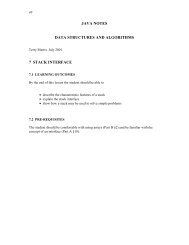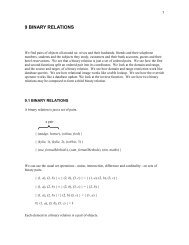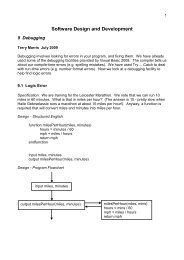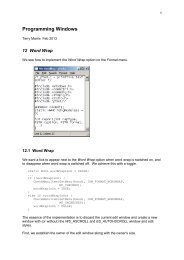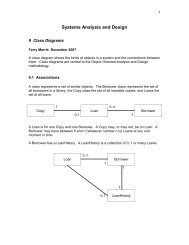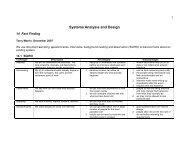TEAMWORK - A PRACTICAL GUIDE FOR STUDENTS - Terry Marris
TEAMWORK - A PRACTICAL GUIDE FOR STUDENTS - Terry Marris
TEAMWORK - A PRACTICAL GUIDE FOR STUDENTS - Terry Marris
You also want an ePaper? Increase the reach of your titles
YUMPU automatically turns print PDFs into web optimized ePapers that Google loves.
6Becoming a Functional TeamIdentifying where the team is in the development process helps it to become more efficient,creative and productive, but only if the team is deliberately striving towards being fullyfunctional. These stages in team development come from the work of Bruce Tuckman and MJensen [13].Stage Process ProductForming The team comes together for the first time.Members are getting to know each other, the skillseach brings and what each expects. Everybody isvery polite. Dominant personalities emerge.Answers to the questions set on the previoussection - Forming a Team - are discussed.The team lacks clear direction and wants someoneelse to tell them what to do.StormingNormingPerformingTeam members are trying their ideas out on eachother and there is little agreement.Members feel that their contribution is not valued.Members are more interested in their own ideasthan integrating and using the ideas of others.Members with conciliation skills help minimisethe time spent in this non-productive stage.Team members have learned to trust and respecteach other and are moving on to the work of theproject. People management skills have improved.Members agree their team roles.Members agree their project tasks.Members agree the amount of work each is to do.Spirit of co-operation evident.Members start listening to each other andrespecting each other's opinions.The team is now fully functional. The main focusis on the project.Regular meetings are held. All members attendand come prepared. Meetings are documentedwith agendas and minutes.Team members perform their roles efficiently andslip into each other’s roles effortlessly.Decisions are readily reached and implemented.Members continuously review the team's progress.Views are freely exchanged.Members support and help each other.Members feel free to express their ideas withoutfear of personal criticism.Notes on each teammember, the skills andexperience they bring,and their expectations.Little or no progress ismade on the project task.Notes on different waysof tackling the project -but no agreed aims,objectives and methods ofworking.Aims, objectives andworking methods areagreed and documented.Gantt chart.Events DiaryTeam meeting Agendasand minutes.Results of tasks aredocumented and sharedDrawings, reports andprototypes are createdUpdated Gantt charts andEvents Diary.These stages apply to every team without exception. Remember to involve every member inthe decision process. Do not allow members with the loudest voice to dominate.




